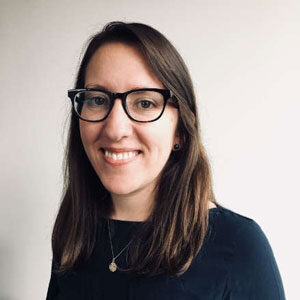What the End of ‘College for All’ Means for the Future of America’s High Schools
Waite: Parents & students describe happiness, fulfillment, and a ‘good life’ as top priorities for high school — not preparing every teen for college.

Get stories like these delivered straight to your inbox. Sign up for The 74 Newsletter
This essay was originally published as part of the Center on Reinventing Public Education’s 2023 “State of the American Student” report. As part of the effort, CRPE asked 14 experts from various sectors to offer up examples of innovations, solutions or possible paths forward as education leaders navigate the current crisis. (See all the perspectives)
CRPE’s in-depth interviews with students and educators across six high schools in New England yielded a resounding message: the primary purpose of high school is not to prepare every student for college.
Instead, parents and students in wide-ranging circumstances describe happiness, fulfillment, and a “good life” as their priorities. “I just hope that she’s happy, [that she finds] something that she enjoys doing and that she can just find her place,” said a parent of a student in credit recovery. A parent of a straight-A student taking multiple AP courses said, “I want her to just pursue whatever makes her happy, honestly.” A rural student said, “How I measure success isn’t exactly in scores or numbers. It’s more of, do I enjoy where I’m at in life, and is this where I saw myself going, and where can I go from here?”
Underneath these desires hum a host of economic and social pressures. “Success would mean for me that I am not living a paycheck-to-paycheck life, or I’m not struggling to provide for me and the others around me,” said one student. A parent added, “Honestly, I think it’s really hard for kids to settle on what they want to do right out of high school right now, given the state of our environment and our world and everything that’s happening.”
What leads to happiness and stability? Some students have told us about college plans, convinced that college is the path to “being my best self and earning my own money and doing a job that I enjoy.” But others aren’t so convinced that college will lead to success on their own terms. The reasons are varied: young people don’t want to do more school; they’d prefer to avoid high-stakes tests and applications; they’re concerned about finances; or, they would simply prefer to start earning money in a job they know rather than make a big bet on future opportunities they can’t access yet.
Administrators in our study are also noticing a trend away from college as the agreed-upon best path out of high school. “At one point, people defined success by college,” said an assistant superintendent. “And I think that people have come to realize now that that’s not the ultimate measure of success.”
Letting go of ‘college for all’ …
Our study’s findings aren’t an anomaly. Since the pandemic, Americans as a whole have deprioritized college prep as a key function for high schools.
In many ways, this shift is a good thing. Present and future workforce needs are changing rapidly, demanding continuous waves of learning. Meanwhile, college graduates even now aren’t reliably showing proficiency in skills that employers value. CRPE and others have argued for years that the old “4+4” equation—four years of high school and four years of college—is increasingly outdated. That’s especially true when average annual costs for a four year degree top $35,000 and student debt is crushing adults across income levels, with few solutions in sight. Over the past decade, Gallup surveys have consistently found that three in four Americans do not believe college is affordable for everyone who needs it.
… Without exacerbating inequities
The challenge for high schools is how to make the shift beyond college for all without reverting back to fundamentally inequitable patterns. While historically underrepresented groups have made notable gains in enrollment and graduation over the past decades, disparities persist along the lines of race and income. Those inequalities are cause for concern because evidence still shows that college can be a powerful engine of economic mobility. Students from low-income and high-income families who attend the same college, especially selective colleges, end up having similar earnings in adulthood. But students from families in the top 1% of income distribution are 77 times more likely to attend elite colleges than students from the poorest families. Taking into account persistent racial wealth gaps, this means that Black, Hispanic/Latino, and Indigenous learners face multiple structural barriers to economic mobility.
The push for K-12 schools to prepare all students to enroll in a four-year university represented a laudable effort to address this staggering inequality, but the problem hasn’t been solved. In 2022, Black, Hispanic/Latino, and Asian Americans all ranked college prep as a much higher priority for high schools than White Americans did. In our study, one teacher from a Title I high school said, “I worry for every single student that leaves us, that they’ll have the tools to make a real life for themselves, with choices.” Could leaving “college for all” behind mean giving up on a commitment to equity?
The way through this conundrum is to reject the false choice between going to college or not. If the options are either “college” or “no college,” then inevitably only some students—mainly those already advantaged—will get support toward a college degree. But if the options include many paths to family-sustaining careers, with further education and credentials at multiple points on each path, then many choices can be good choices.
High schools that internalize this mantra won’t be any less committed to college readiness for all students, and they won’t divide their students between kids who are college-bound and others who prefer to “work with their hands.” Instead, they’ll help every young person be ready for the adult world of work, aware of the trade-offs of choices they make, and academically prepared for higher education—when they choose it or need it.
What high schools are learning
No school we’ve studied has fully solved how to move beyond the traditional mindset while still avoiding the harm of low expectations, especially for historically underserved students. But some schools are approaching it in deliberate, thoughtful ways from which that others can learn.
At Nokomis Regional High School in rural Maine, educators believe that a wide range of college and non-degree options requires students to develop self-knowledge and articulate their own personal life values. Nokomis students explore postsecondary interests starting in ninth grade and develop a concrete plan by senior year. A critical new step is an interdisciplinary course called “The Good Life,” which helps, according to one student, to define “your version of the good life and how are you going to achieve it.” She also noted that comparing visions can help students expand their thinking about options. At Nokomis, as well as several other schools in our study, educators describe success as a viable postsecondary plan for every student, whether or not four-year college is part of it.
KIPP Academy Lynn Collegiate in Massachusetts was founded with the KIPP network’s commitment to guarantee college access and success for underrepresented communities, especially students of color. The school has long focused on college prep courses, robust college counseling for every student, and ongoing support for students through their college years. But now, administrators are listening to students who don’t yet feel ready to commit to college, and others who have dreams of entrepreneurship, beauty school, performance arts, and beyond. The school is expanding its own postsecondary counseling services to support a wider range of options, while staying committed to rigorous academic preparation so every student is at least college ready, if not college-going.
The high school every student deserves
In these and other high schools across the country, the work ahead will be difficult. High schools have proven remarkably resistant to change, and past efforts to transform them have seen limited results at best.
Most critically, schools will need to maintain a laser focus on setting and maintaining high expectations for every student, even if the endgame for those expectations—traditionally, a bachelor’s degree—is shifting. Students who don’t choose college right away cannot be given an “easier” high school experience; they need a challenging one that maximizes their potential.
Doing this well means listening seriously to families about their goals and priorities, not telling them what’s best. It also means exposing students to a far more diverse range of education, training, and work opportunities. Every student will need information and adult mentors to help them learn about their options, think through the trade-offs, and make an informed decision. They’ll also need relationships with a diverse range of adults to gain a foothold in their careers. Schools can’t do this alone: they will need help from employers and community partners. They also need their states to redesign policies on credit and seat time, since existing policies allow precious little flexibility for learning through internships and outside of school walls.
Skeptics who are hesitant to let go of the college-focused reform agenda need only think about the vibrant individuality of young people in their lives. In our study, one academically ambitious student dreams of being an opera singer, another student with a history of truancy aims to be a judge, and a third from a family of educators just wants to start working. They need their high schools to take them seriously. They each deserve an education that helps them to set and pursue goals that matter to them—and to adjust course when their interests or circumstances change.
See more from the Center on Reinventing Public Education and its 2023 “State of the American Student” report.
Get stories like these delivered straight to your inbox. Sign up for The 74 Newsletter


